In its first manned rocket launch, SpaceX’s Falcon 9 rocket on May 30 is set to bring NASA astronauts to the International Space Station. The spaceflight, taking off from the same launch pad used to bring people to the moon, represents other milestones, as well: It’s the first time a private company is sending people to space; it’s also the first space launch since 2011 to leave from the United States. The launch was scheduled for May 27 but was rescheduled because of rain.
In honor of this historic moment, Stacker used a combination of news, government, and other archival reports to curate a gallery of 50 other historic firsts in space. Although the idea of galaxies beyond the Earth’s atmosphere has long entranced human beings, it wasn’t until the second half of the 20th century that space flight became a reality, enabling humans to see beyond the Earth—and, in the case of the first photographs taken of the Earth—to see the Earth itself.
We tend to think of the middle-to-end of the 20th century as a time when many of the firsts in space occurred, and this is for good reason. The Cold War between the United States and the Soviet Union was a major factor influencing the proliferation of space activity. Both countries competed for dominance in outer space, and many of the firsts achieved in space were due to the desire of both countries to be “the first.” When the Cold War ebbed late in the century, there was less incentive for either country to out-rocket the other. As we can see with SpaceX, however, humans’ fascination with space and desire to explore the cosmos is as strong as ever.
Keep reading for a comprehensive retrospective of famous firsts in space, including the United Kingdom’s first astronaut, the first insect to visit space, and the planet’s first space tourist.
You may also like: U.S. Marine Corps history from the year you were born
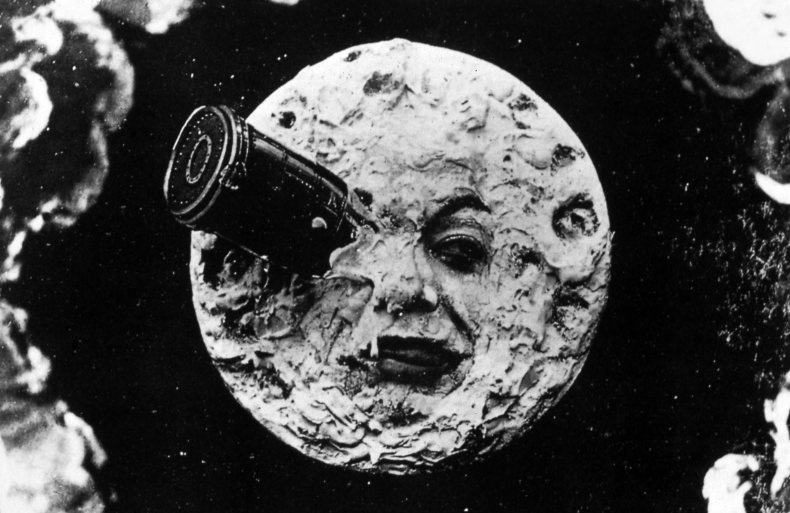
1902: First space movie
The first space movie is widely considered to be 1902’s Le Voyage dans la Lune. The film depicts a journey to the moon by a group of astronomers.
1947: First insects in space
The first insects to travel to space aboard a manmade ship made the journey in 1947. A group of fruit flies aboard the American V-2 rocket reached an altitude of 108 kilometers and made it back into the Earth’s orbit alive.
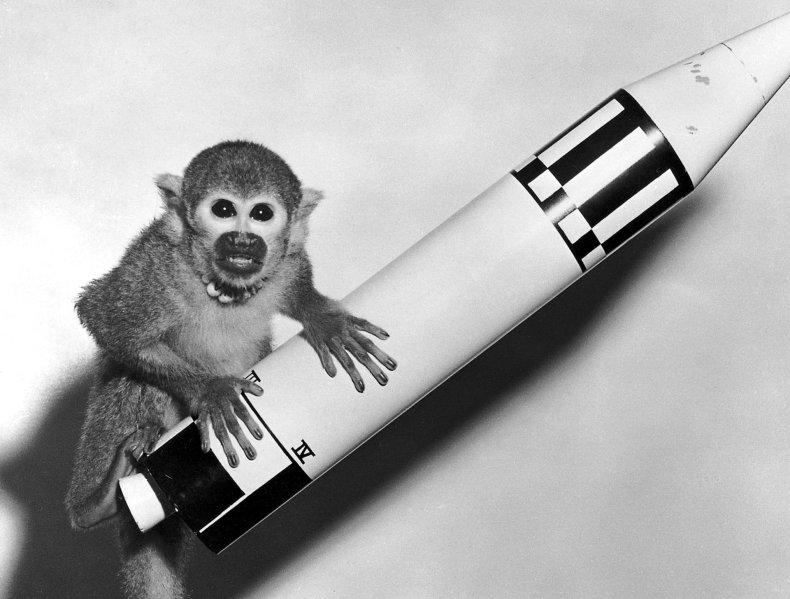
1948: First monkey sent to space
The first monkey was sent to space in 1948, a male rhesus monkey named Albert. Sadly, he did not reach space (which is officially 100 kilometers from the Earth’s surface), and he died at some point in the journey. He was followed a year later by a monkey named Albert II, who made it to space, but did not make it back alive.
[Pictured: Monkey Baker with a Model Jupiter Vehicle on May 29, 1959.]
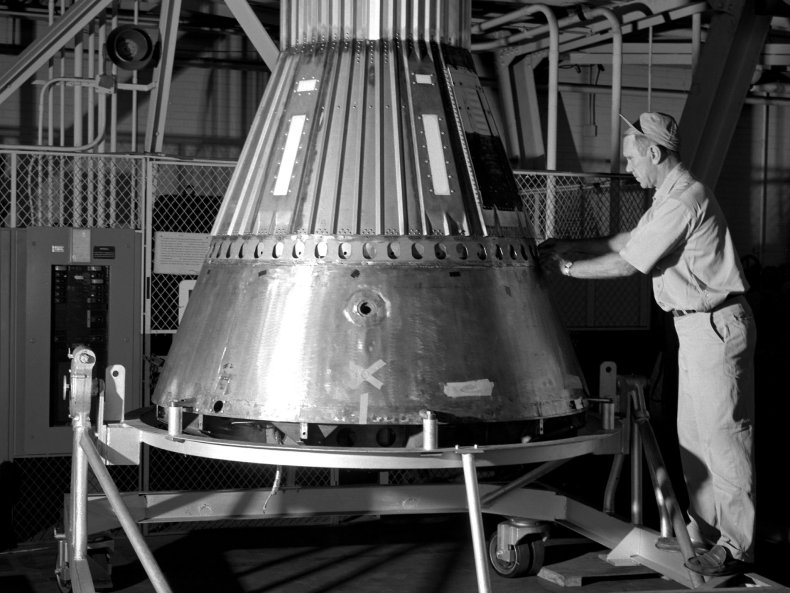
1958: First American man-in-space program
The United States’ first man-in-space program was launched in 1958. The so-called Project Mercury aimed to orbit a manned spacecraft around Earth and research man’s ability to function in space. The project made six manned flights between 1961 and 1963.

1959: America’s first astronauts
The first American astronauts were introduced in 1959. Members of the group were finalists from a competitive vetting process than began with over 500 candidates. These “Original Seven” were eventually called the “Mercury Seven” after the name of the American space project—the Mercury Program.

1961: First person in space
The Soviet Union beat the United States in the space race in 1961 by sending the world’s first person to space. Yuri Gagarin became an international celebrity after his return and toured the world promoting his achievement on behalf of the Soviets.
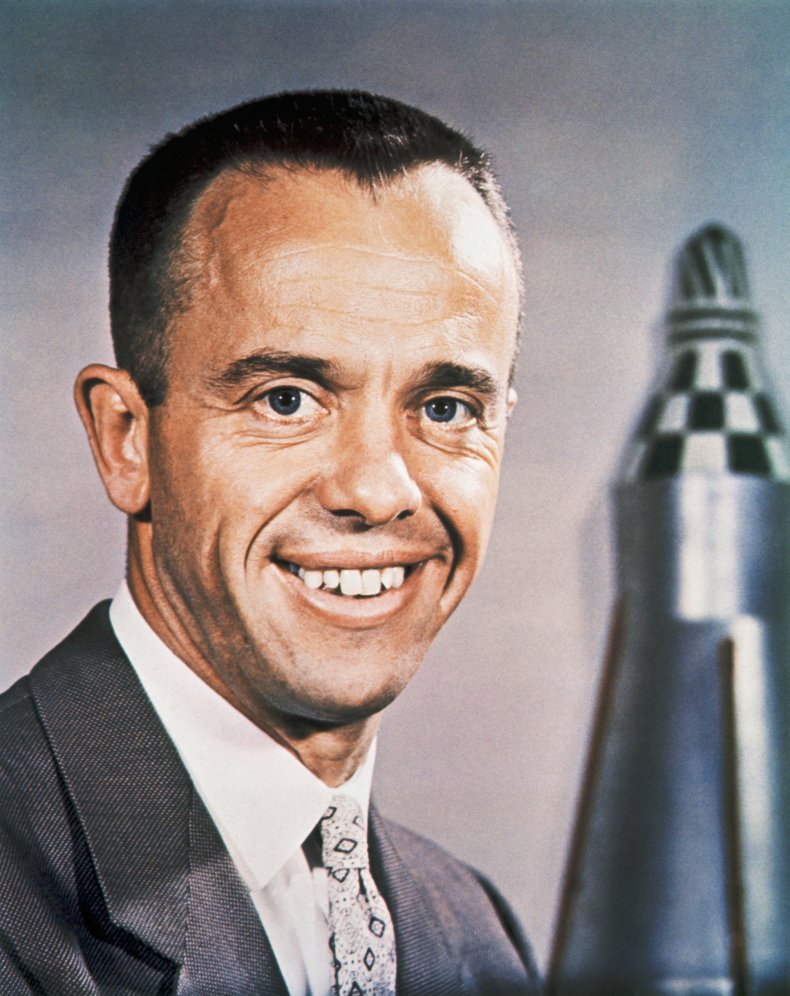
1961: First American in space
Alan Shepard became the first American in space less than a month after Soviet Yuri Gagarin became the first person in space. Shepard’s May 5 journey lasted just over 15 minutes.

1961: First lengthy space flight
In contrast to the much-shorter flights that had occurred earlier that year, the Soviet astronaut Gherman S. Titov’s August 1961 flight lasted more than 25 hours. Titov thus also became the first person to sleep in space—and the first person to experience “space sickness.”

1962: First American orbits the Earth
John Glenn became the first American to orbit the Earth in 1962. Glenn was a member of the Mercury 7, and circled the globe three times in less than five hours, concluding with a splashdown and recovery in the Atlantic Ocean.
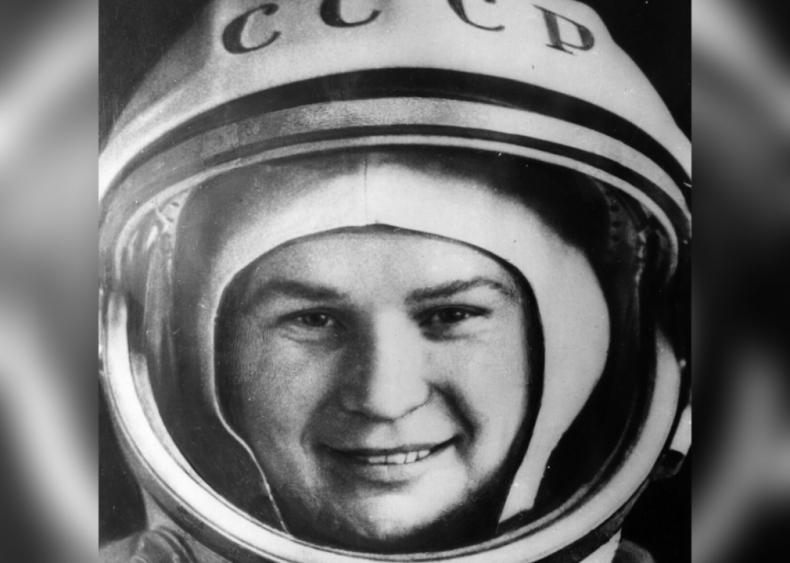
1963: First woman in space
The Soviet astronaut Valentina Tereshkova became the first woman in space in 1963. Tereshkova spent 71 hours in space—more than the combined total of all American astronauts to that date.
You may also like: From Prime to Kindle: 26 Years of Amazon History

1963: First cat in space
France was responsible for the first cat in space, who set out in 1963. The cat Felicette was part of a group of 14 cats trained for space travel. Her journey lasted 15 minutes, and she returned to Earth unharmed.
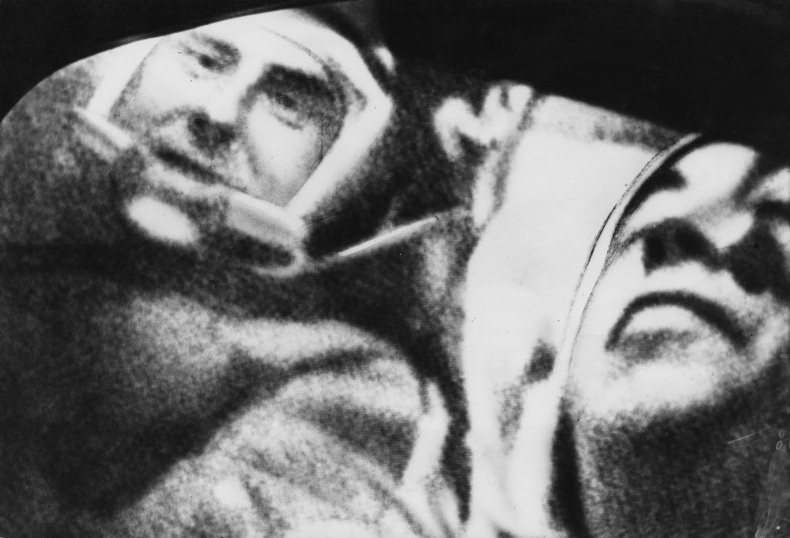
1964: First flight without space suits
Three Soviet astronauts became the first in space without spacesuits in 1964. The three men’s aircraft had not been designed for a crowd, so the suits being left behind was a matter of saving space, which turned out to set a world precedent.
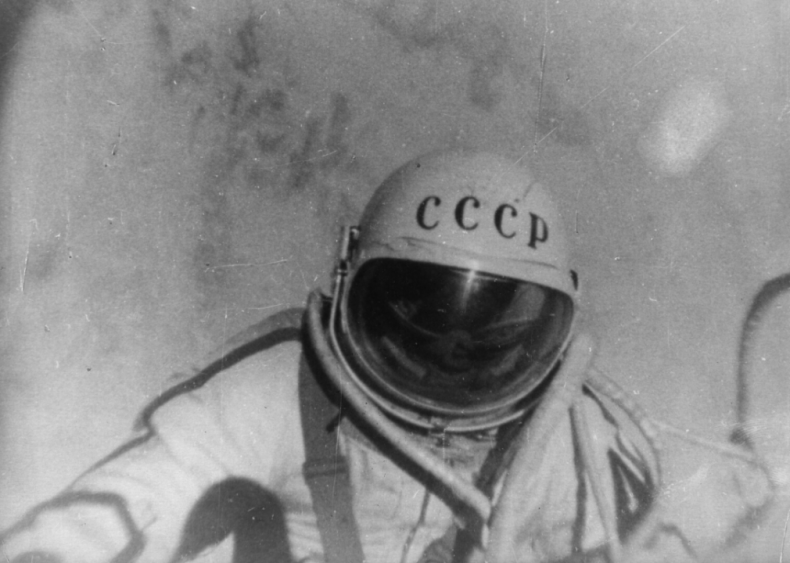
1965: First spacewalk
The Soviet astronaut Alexei Leonov was the first person to walk in space in March 1965. Leonov’s first words on exiting his spacecraft and catching view of the Earth was: “The Earth is round!” Decades later, he has said that what remains imprinted on his memory is “the extraordinary silence.”

1965: First American space walk
Almost three months after Alexei Leonov took the first spacewalk, American Ed White became the first American to walk in space in 1965. White’s walk lasted approximately 20 minutes. Sadly, he would perish in the tragic Apollo mission two years later.
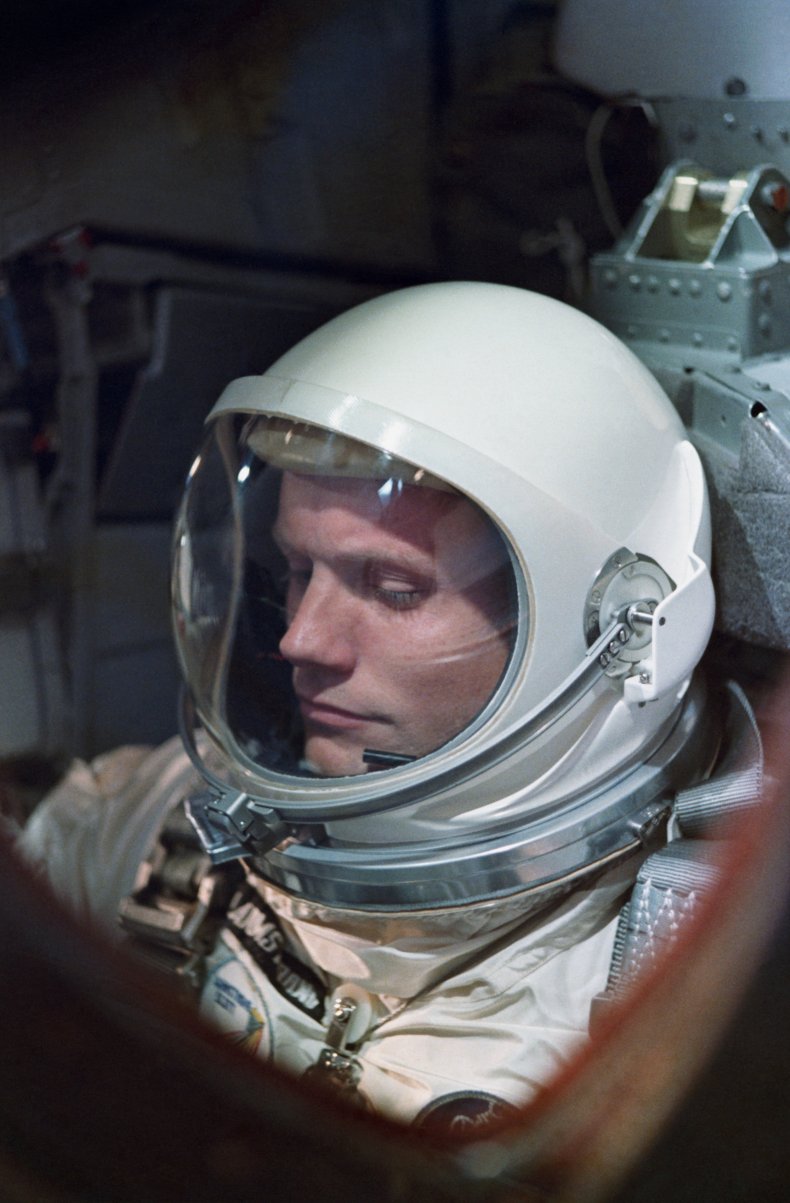
1966: First manned docking in space
On March 16, 1966, a staffed spacecraft made its first docking exchange in space. The Gemini VIII spacecraft—manned by the American astronaut Neil Armstrong—linked up with the unmanned Agena target vehicle, marking the first time that two spacecraft linked together outside Earth’s orbit.
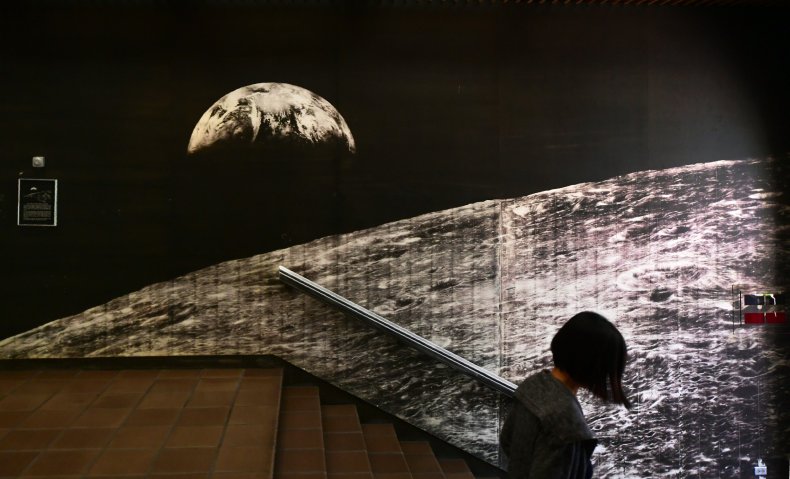
1966: First photo of Earth from the moon’s orbit
The first photograph of the Earth was taken from the moon’s orbit on Aug. 23, 1966, and transmitted to Earth by the Lunar Orbiter I. The NASA tracking station at Robledo De Chavela near Madrid, Spain first received the image, according to NASA.
[Pictured: A woman walks past a wall sized image of the “First View Of Earth From The Moon” at the California Institute of Technology (Caltech) Seismological Laboratory in Pasadena, California on June 1, 2017.]
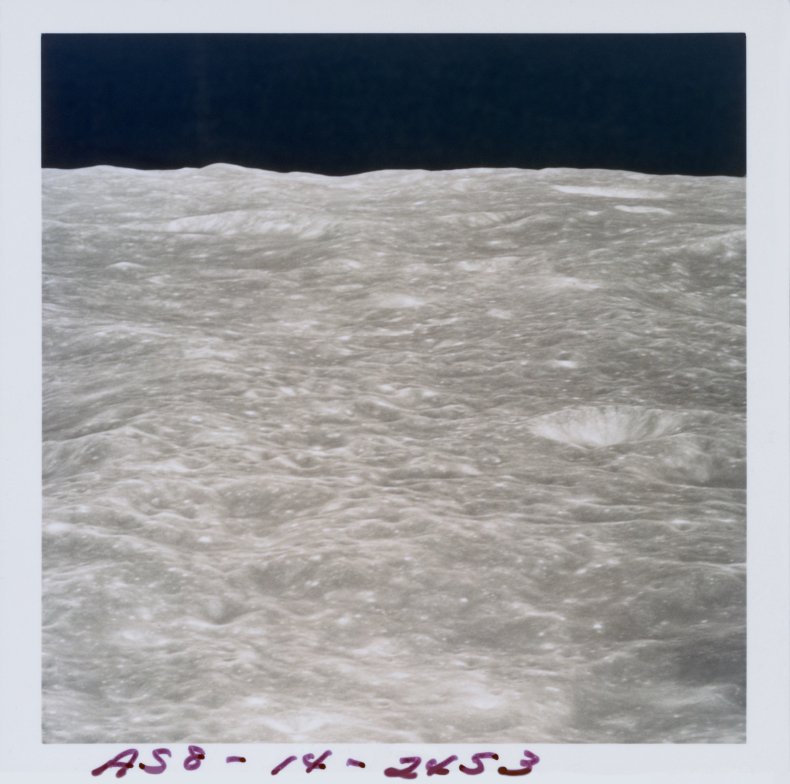
1968: First view of the far side of the moon
The far side of the moon is the hemisphere of the moon that faces the opposite direction away from the Earth. In 1968, the Apollo 8 crew saw this side of the moon and became the first humans to have ever done so. “It’s a beautiful, beautiful view,” one of the crew transmitted back to mission control on Dec. 22, 1968.
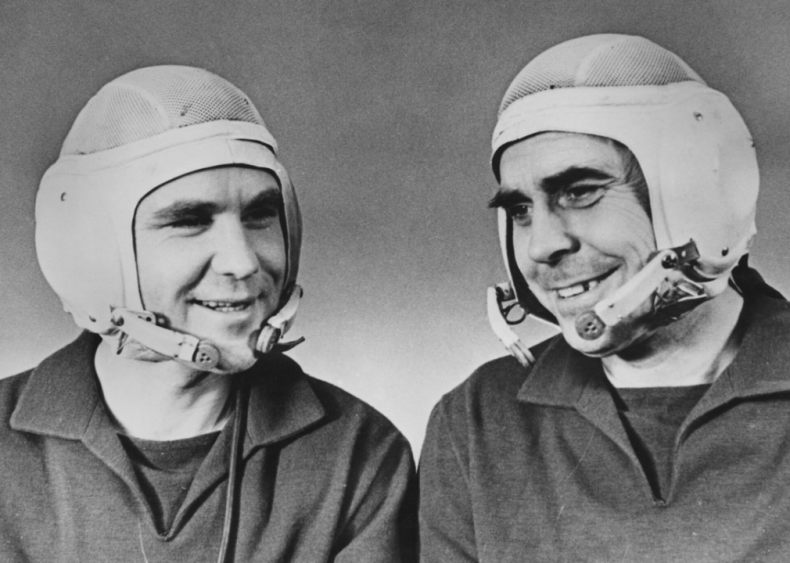
1969: First multi-craft, multi-manned week
In the week of Oct. 11, 1969, the Soviet Union sent three spacecrafts with a total of seven men into space. This was the largest number of spacecraft and crew that had ever been in space simultaneously.
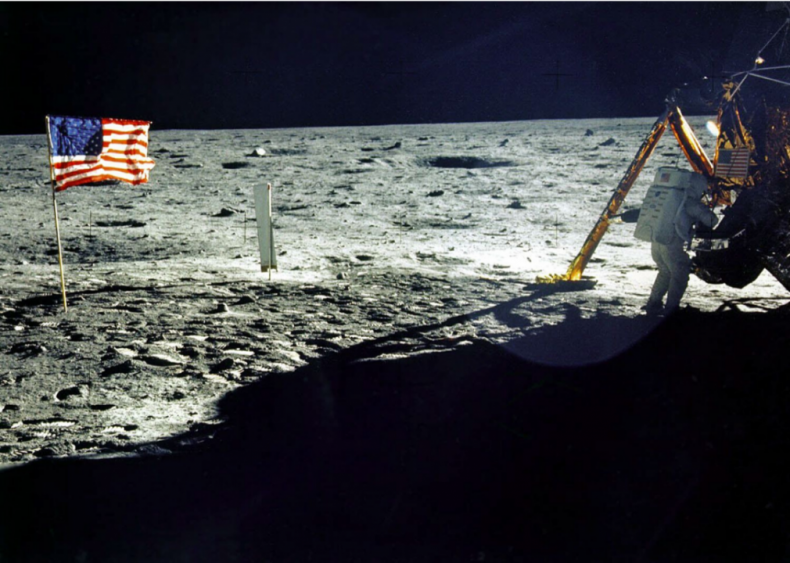
1969: First man on the moon
The American Neil Armstrong became the first man on the moon in 1969. He and Buzz Aldrin walked around the moon for 2.5 hours, exploring and collecting samples before returning to Earth with Michael Collins, who had stayed in orbit while his co-astronauts walked.
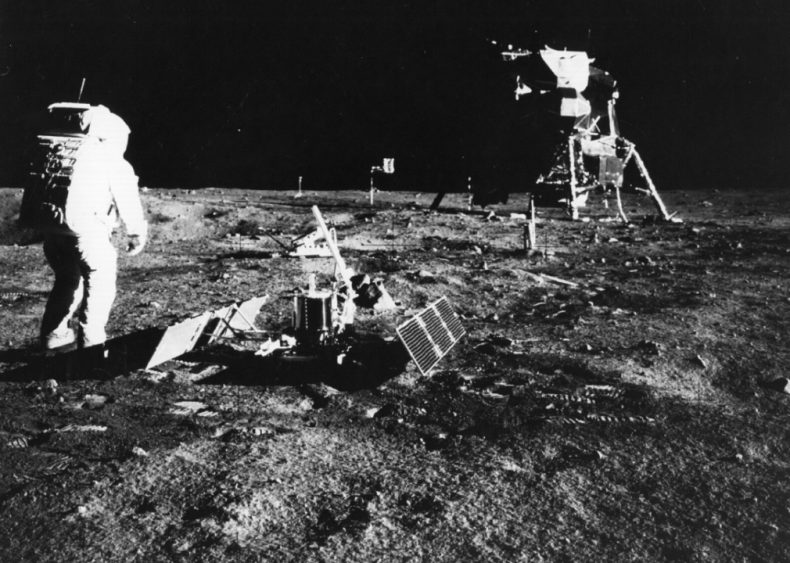
1969: First man pees on the moon
In 1969, the American astronaut Buzz Aldrin claimed his place in space history. Aldrin became the first man to pee on the moon this year. What’s more, he did so on live television.
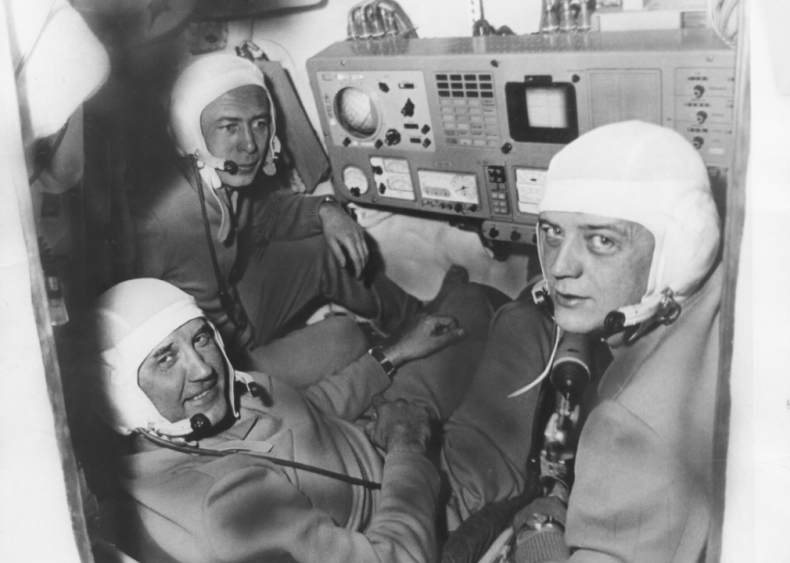
1971: First deaths in space
In a tragic space first, three Soviet astronauts—Georgi Dobrovolsky, Vladislav Volkov, and Viktor Patsayev—became the first to perish in space on June 30, 1971. A broken breathing valve caused a drop in pressure inside their spacecraft, asphyxiating them within seconds.
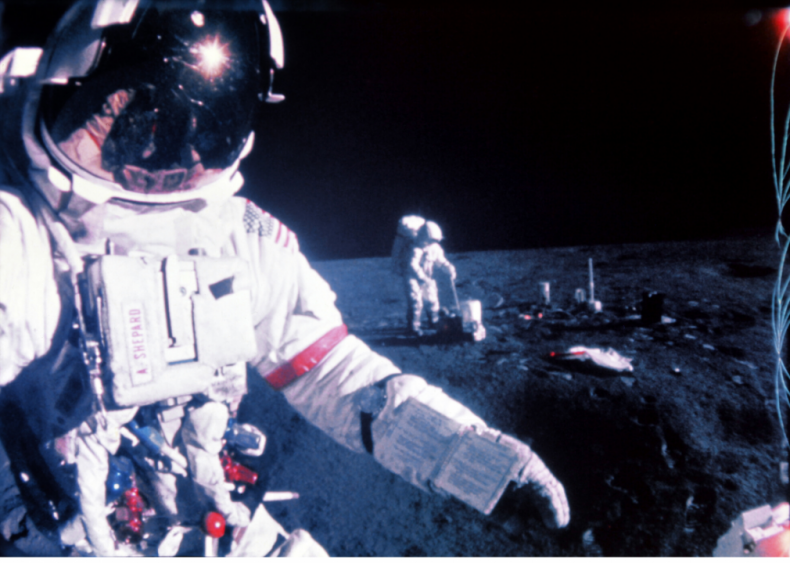
1971: First moon golf
The American astronaut Alan Shepard was first to use the moon as a driving range on Feb. 6, 1971. His game of choice? Golf. To this day, Shepard, who estimates he hit the ball about 200 yards, remains the only person to play golf on the moon.
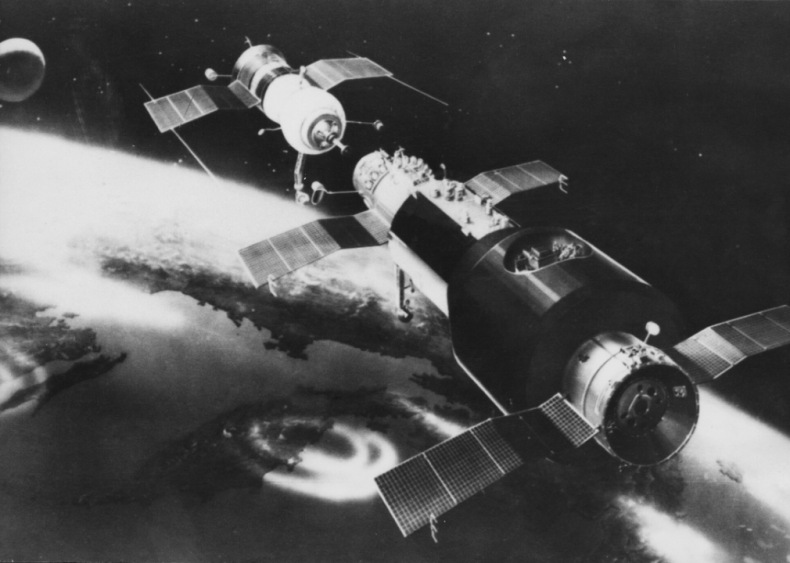
1971: First spacecraft links to space station
The Soviet Soyuz 11 became the first spacecraft to link with a space station in space in 1971 when it connected with the Soviet space station Salyut 1. Tragically, the Soyuz 11 would not return to Earth—all three astronauts on board would die due to a loss of pressurization in the spacecraft.
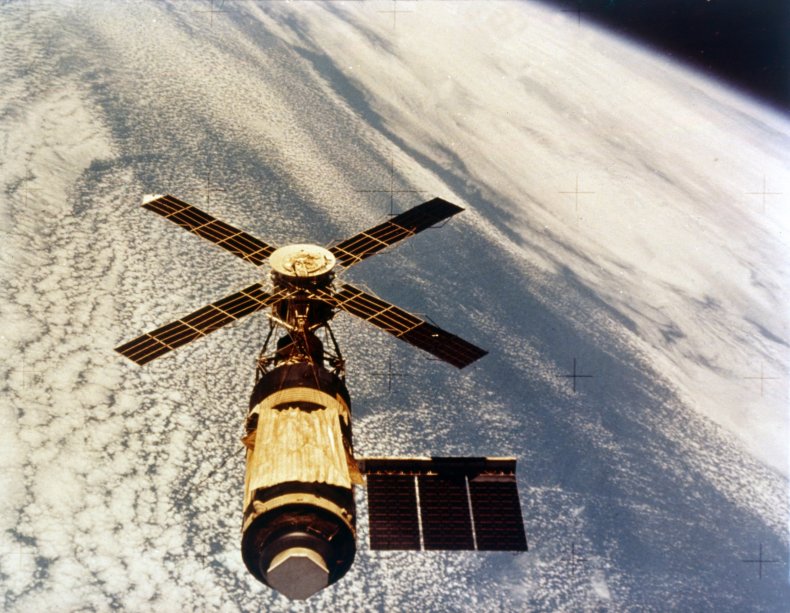
1973: First skylab
NASA launched the world’s first skylab in 1973. Three crews visited over the course of the next two years, as massive amounts of outer space data were transmitted back to mission control in Houston.
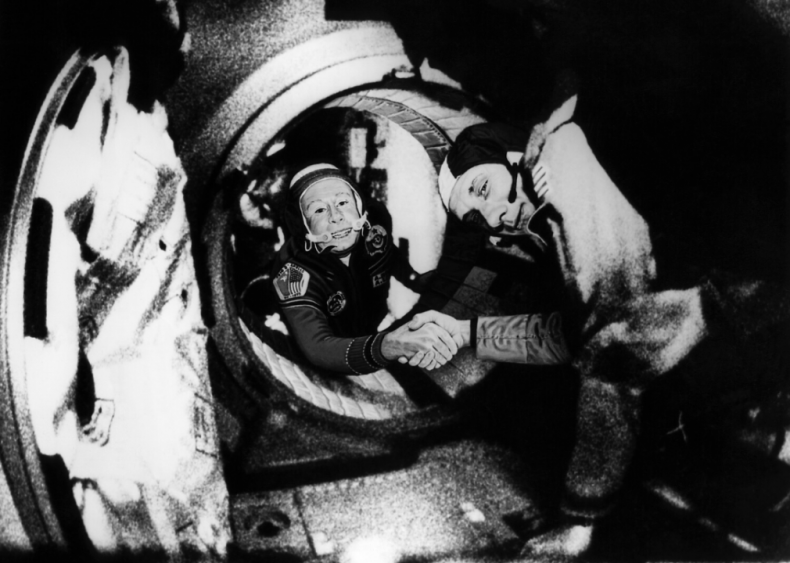
1975: First international manned spaceflight
The United States and the Soviet Union had been locked in a space race for decades, so it came as a welcome joint venture in 1975 when the two nations teamed up for the first international manned spaceflight. An American Apollo spacecraft met up with a Soviet Soyuz, and their crews performed several experiments together.
You may also like: 50 Totally Random Facts About the U.S.

1977: First ‘Star Wars’ film
Arguably the most famous space film series was launched in 1977. The first Star Wars film A New Hope was a smash hit with audiences everywhere, taking place in a galaxy “far far away.”
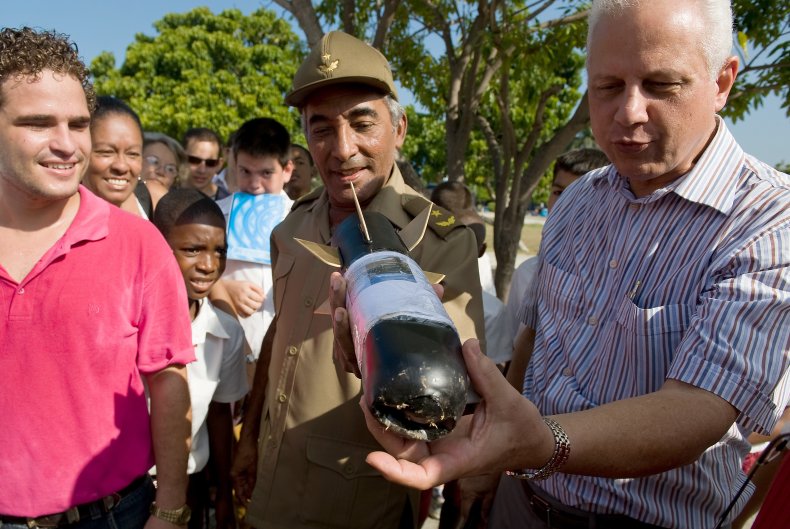
1980: First Black astronaut in space
Arnaldo Tamayo Mendez became the first Black astronaut in space in 1980. Mendez, who was born in Cuba, was part of a Soviet program to fly non-Soviet astronauts aboard in Soviet spacecraft.

1981: First space shuttle reaches orbit
The first space shuttle—the Columbia—reached orbit in 1981. Columbia would go on to take dozens of astronauts to space over the next two decades.
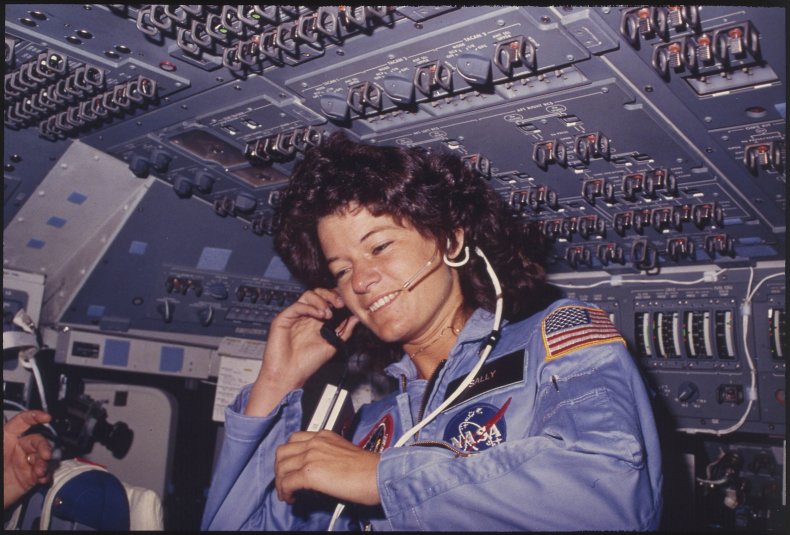
1983: First American woman in space
Sally Ride became the first American woman in space in 1983. Ride’s milestone would turn her into an immortal icon, with a Barbie doll aiming to prove to young girls that they, too, could grow up to go to space.

1983: First African American in space
Guion S. Bluford was the first African American to go to space in 1983. Bluford would make a total of four space trips and is recognized in the International Space Hall of Fame.

1984: First Soviet woman walks in space
In 1984, Svetlana Savitskaya became the first Soviet woman to walk in space. The context of her walk was participating in welding experiments on the space station’s outer hull. She was also the first person to weld in space alongside Vladimir Dzhanibekov.
[Pictured: Soviet Presidium Konstantin Chernenko presenting an award to Svetlana Savitskaya.]
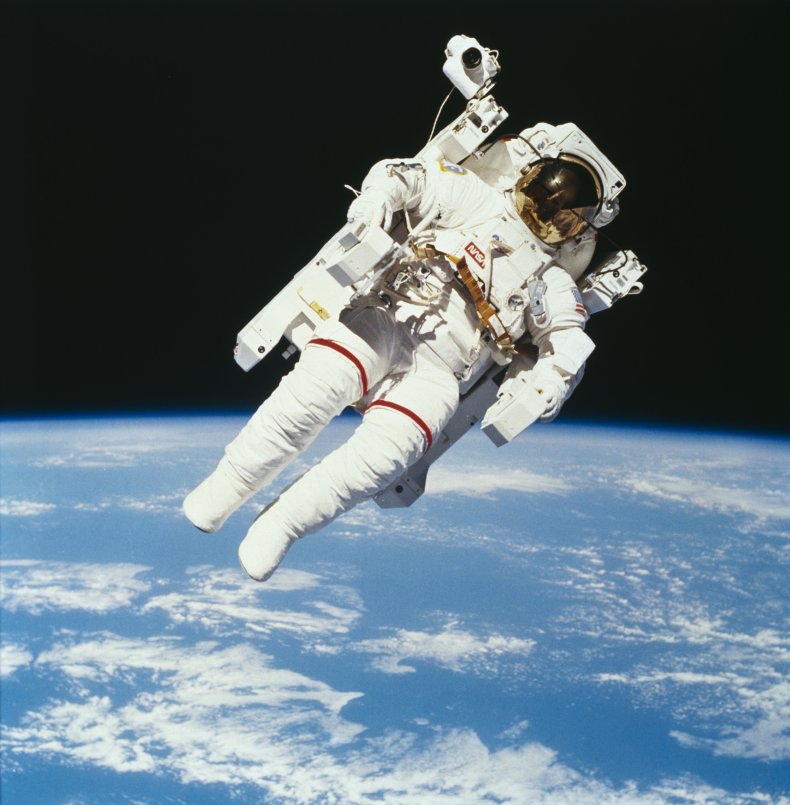
1984: First untethered spacewalk
Bruce McCandless became the first person to break free from the tether connecting him to the Challenger Space Shuttle on Feb. 7, 1984. McCandless then took an instantly-iconic “walk” on the moon, in which he actually floated in space.

1984: First astronaut from India in space
India was the next nation to follow Russia and the United States in sending astronauts to space. The country sent its first on April 2, 1984, when Rakesh Sharma launched into space—albeit aboard a Soviet shuttle.
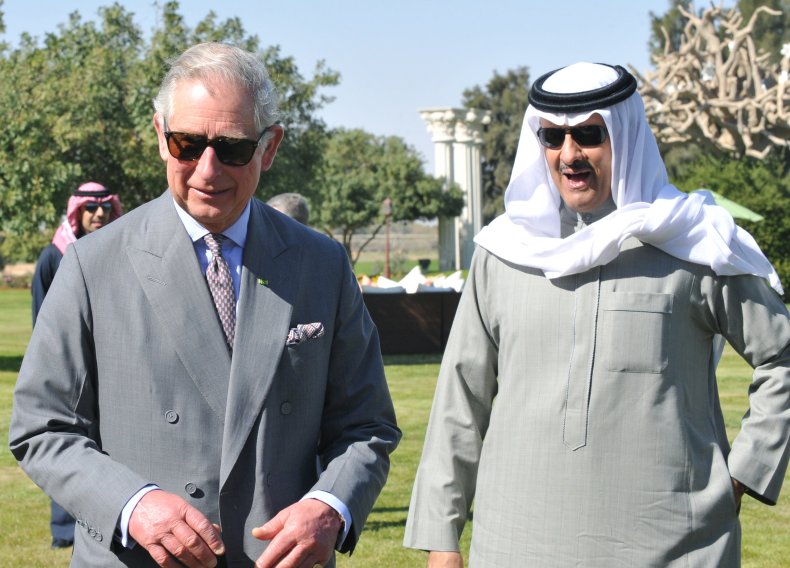
1985: First royal in space
The Saudi Sultan bin Salman Al-Saud became the first royal in space in 1985. But he was no mere tourist; as a member of the Saudi Air Force, he had 1,000 hours of flight experience when he joined NASA’s Discovery mission in 1985.
[Pictured: Saudi Tourism Minister Sultan bin Salman al-Saud (R) joins Britain’s Prince Charles for a tour of Janadriya farm in Riyadh, on February 18, 2014.]
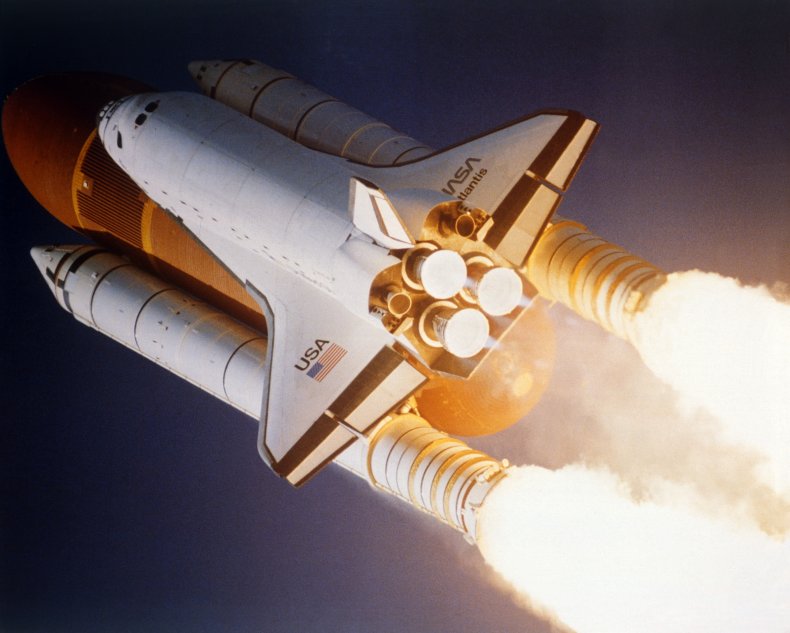
1985: First Atlantis shuttle flight
The space shuttle Atlantis took off for the first time in 1985. The Atlantis took approximately half the time of earlier space shuttles to construct, due to lessons learned in those constructions.
You may also like: When Can I Get Vaccinated? 30 Common Questions about COVID-19, Answered
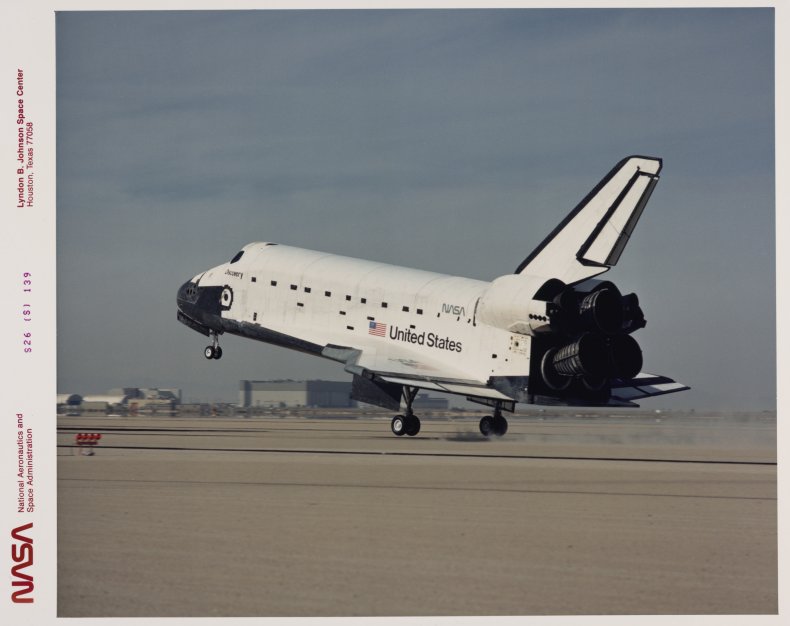
1988: First space shuttle flight since Challenger disaster
In 1988, Discovery became the first space shuttle to take off after the Challenger disaster that occurred 32 months prior on Jan. 28, 1986. The Challenger exploded on takeoff, killing all seven aboard, and halting the American space program for a time.

1989: First probe launched from a shuttle
The first probe was launched from the shuttle Magellan in 1989. The probe was in Venus’ orbit and was also the first to take images of Venus’ entire surface.
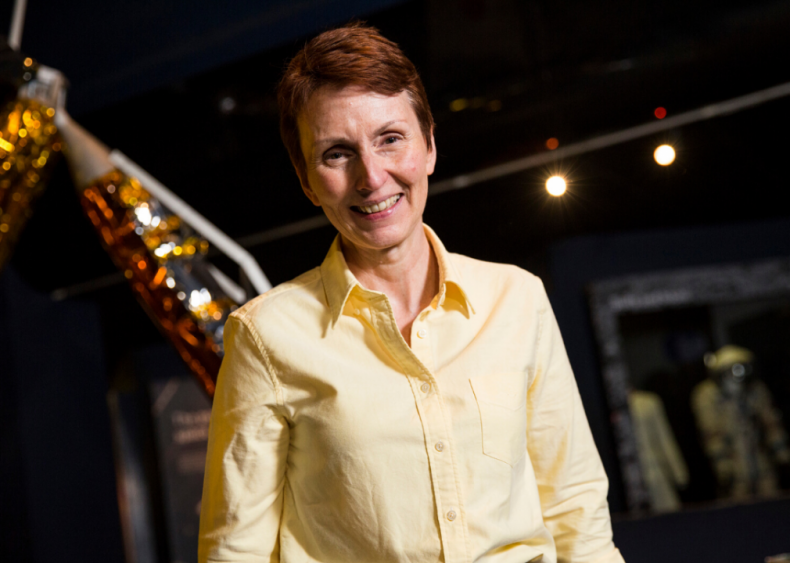
1991: First British astronaut visits space
Chemist Helen Sharman was the first British astronaut and the first woman visitor to the Mir space station in 1991. In January 2020, Sharman claimed aliens existed and could be on Earth right now. Almost a quarter-century after Sharman’s trip to space, Tim Peake—a member of Europe’s NASA equivalent, the ESA—was the first astronaut to sent to space under the European Space Agency.
[Pictured: Helen Sharman attends an event to mark 25 years since her space mission.]
1992: First satellite captured with bare hands
In the middle of a spacewalk, three astronauts came across an unexpected sight in 1992: an errant satellite. Using only their gloved hands, the trio reached out to capture the orbiting satellite, becoming the first-ever to do so.

1995: First woman commands space shuttle mission
Eileen Marie Collins became the first woman to command a Space Shuttle mission. She also piloted a rendezvous with the Russian space station Mir.

1995: First American aboard Soviet spaceship
A sign that the Cold War had finally ended was that the first American boarded a Soviet spaceship in 1995. Norman E. Thagard conducted research with Russian cosmonauts for 115 days aboard the Mir.
[Pictured: U.S. astronaut Norman E.Thagard (L) floating inside the MIR orbital station with Russian Cosmonaut Vladimir Dezhurov (R) at the “Star City” training center —approximately 25 miles east of Moscow in 1994.]
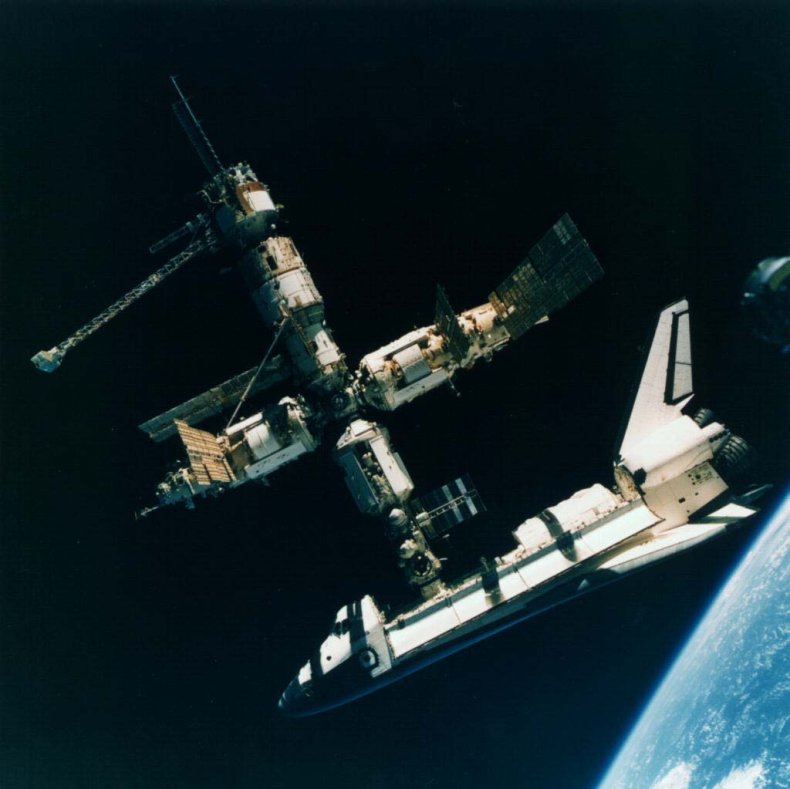
1995: First meetup between Atlantis and Mir
In another sign of Cold War tensions fading into geopolitical history, the American space station Atlantis and the Russian space station Mir had their first meetup in space in 1995. The two together weighed nearly 500,000 pounds.
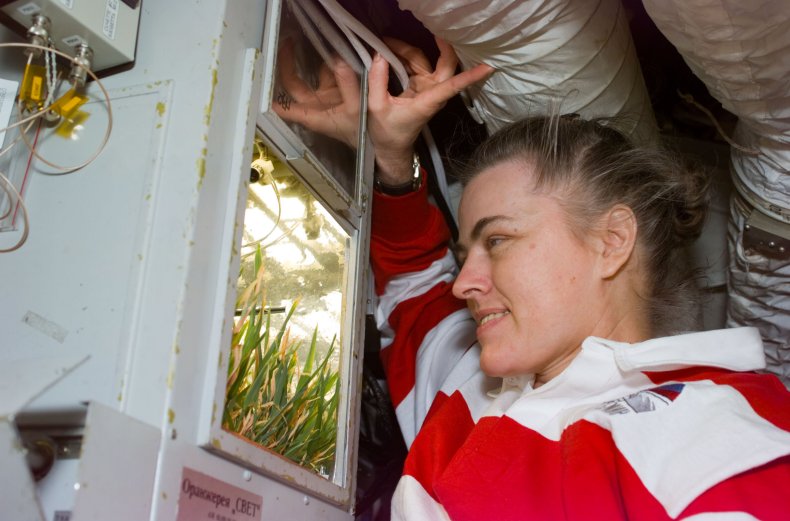
1996: First American woman serves on Mir
Shannon W. Lucid became the first American woman to serve on the Russian space station Mir in 1996. Another of Lucid’s claims to fame? She is the only American woman ever to have done so.

2000: First International Space Station crew
The first crew boarded the International Space Station in 2000. The crew was made up of a combination of American and Russian cosmonauts.

2001: World’s first space tourist
The world’s first space tourist, Dennis Tito, made the trip in 2001. The American millionaire paid to board a Russian spacecraft headed for the International Space Station.
You may also like: States Where People Live The Longest, Ranked
2002: First space railway
The first space railway, the Mobile Base System, was launched in 2002. It launched on the space shuttle Endeavor.

2003: First man marries in space
Yuri Malenchenko became the first man to marry in space in 2003. The bride was still in Texas, and the ceremony was performed over video conference.
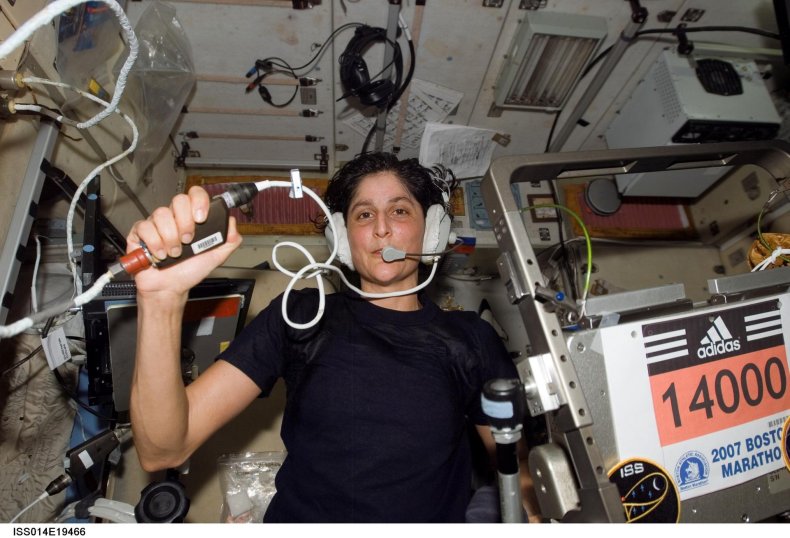
2007: First space marathon
Running a marathon on Earth is hard enough. But in 2007, astronaut Sunita Williams completed the first marathon in space, running the Boston Marathon in less than 4.5 hours.
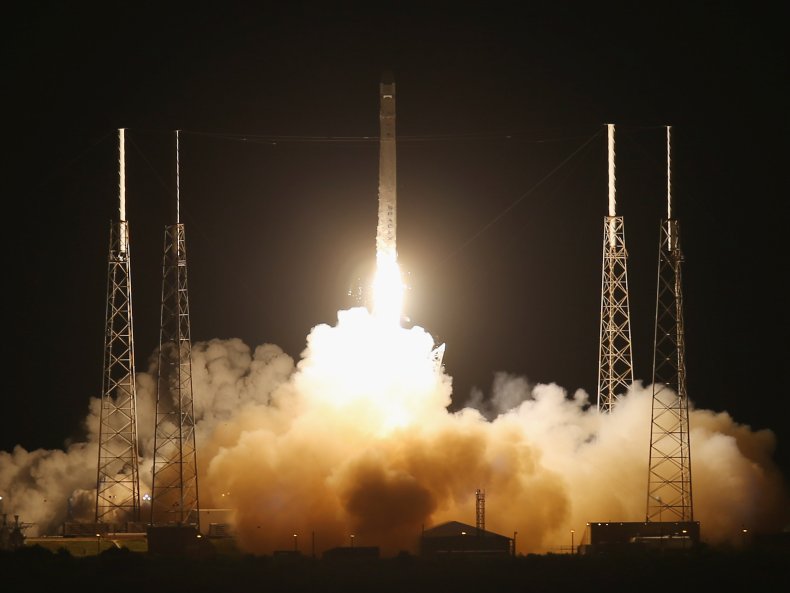
2012: First commercial space mission
SpaceX made the first commercial visit to the International Space Station in 2012. The company was under contract with NASA to provide supplies to the station.

2015: First successful Pluto mission
The first real and successful venture to Pluto was conducted in 2015. The flyby came as close as 8,000 miles to Pluto’s surface—a record—taking close-up images of its terrain.
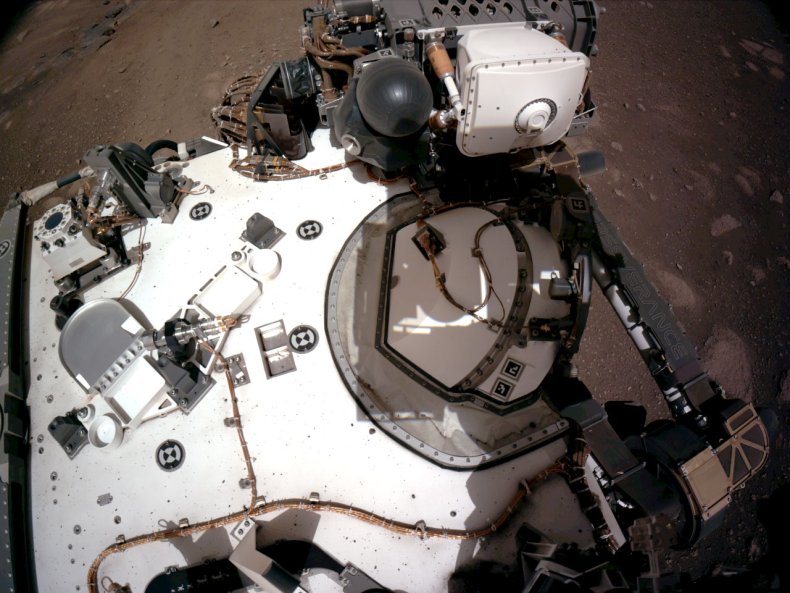
2021: First helicopter on Mars
NASA’s Perseverance rover successfully landed on Mars on February 18, 2021 along with the first aircraft to ever land on another planet—the Ingenuity helicopter. The first flight will be attempted if and when the helicopter survives the frigid evening temperatures on Mars. This first comes 120 years after controlled flight was achieved on Earth.

